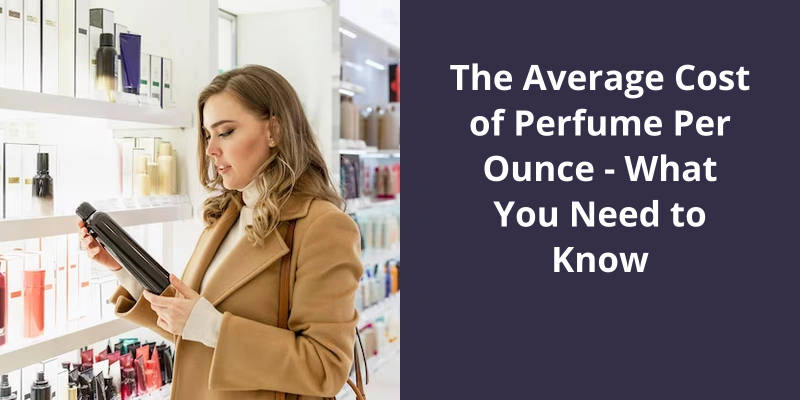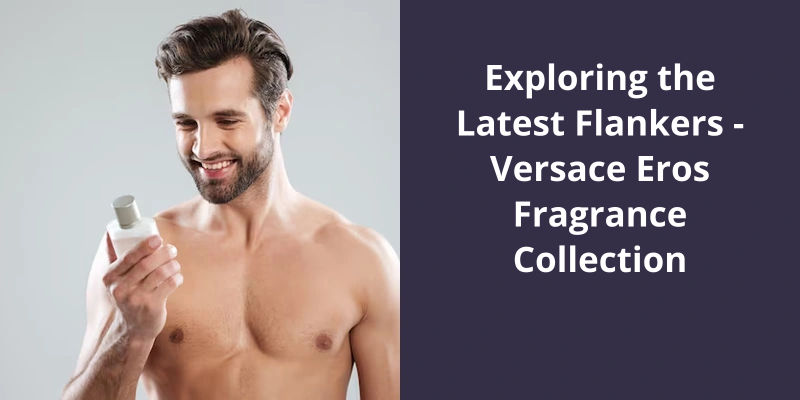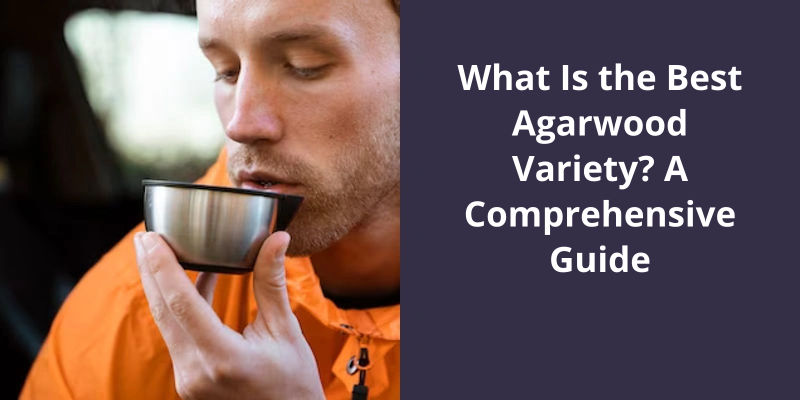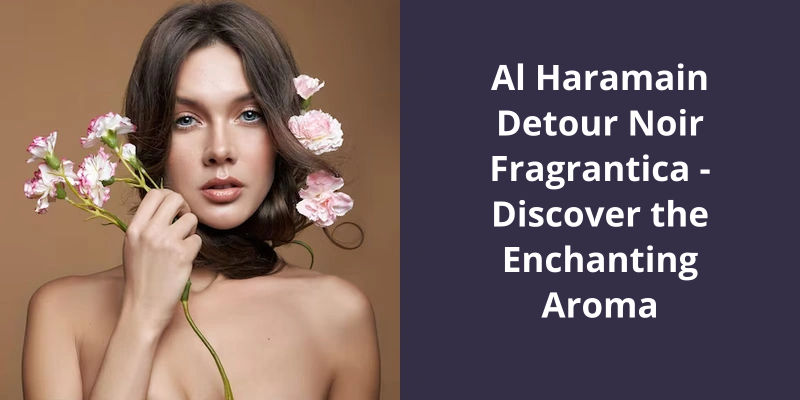The average cost of perfume per ounce varies widely based on several factors, including the brand, ingredients, and type of perfume. Typically, perfumes range anywhere from $10 to several hundreds of dollars per ounce. Mass market perfumes, usually made with synthetic scents, tend to be more affordable, often priced below $30 per ounce. However, designer perfumes are usually more expensive, with prices ranging from $50 to $100 per ounce. High-end or niche perfumes, including those made with rare or exotic ingredients, can exceed $150 per ounce. Therefore, determining what you’re willing to spend and the scent you prefer can help guide your choice.

What Is the Average Price for Perfume?
On the higher end of the price spectrum, luxury and high-end perfumes can range from $150 to several hundred dollars per ounce. These perfumes often come from prestigious and renowned fragrance houses, using rare and exquisite ingredients, as well as intricate packaging and branding. The price of these perfumes is often reflective of the craftsmanship, artistry, and exclusivity associated with them.
It’s important to note that the average cost of perfume per ounce can vary significantly depending on various factors such as brand reputation, ingredient quality, packaging, and exclusivity. Limited edition or niche perfumes, for example, may command a higher price due to their rarity and uniqueness.
Furthermore, the pricing of perfumes can also be influenced by market demand and consumer trends. Popular or highly sought-after fragrances may be priced higher due to their popularity, while lesser-known scents may be more affordable as they cater to a niche market.
While some may be willing to invest in higher-priced luxury perfumes for the luxurious experience they offer, others may find satisfaction in more affordable options without compromising on scent quality.
When considering the profit margin for perfume as a new brand, it’s essential to analyze factors such as pricing and distribution channels. Selling directly online could yield a profit margin of approximately 60%, allowing for a competitive price point of $20 per bottle. However, if you opt for retail partnerships, the profit margin may decrease to around 40%. It’s important to evaluate these aspects strategically to ensure maximum profitability.
What Is the Profit Margin for Perfume?
When it comes to the profit margin for perfume, it can vary depending on various factors such as the brands reputation, distribution channels, and pricing strategy. As a new brand in the market, you may have the flexibility to command a price of around $20 per bottle. However, it’s important to consider the overall cost structure to determine your profit margin effectively.
If you choose to sell directly online, you’ve the advantage of cutting out middlemen and reducing costs associated with distribution. This can result in a higher profit margin compared to other distribution channels. Generally, after accounting for the ingredients, packaging, and other manufacturing costs, your profit margin in this case can be around 60%.
To ensure a healthy profit margin, it’s crucial to carefully analyze your cost structure, including the costs of raw materials, packaging, shipping, marketing, and any other overhead expenses. By effectively managing these costs, you can optimize your profit margin and maintain a competitive edge in the market. Additionally, focusing on building brand recognition and customer loyalty can help drive sales and offset any potential decrease in profit margin through a larger customer base.
The Cost Structure of Perfume Manufacturing: This Topic Can Delve Deeper Into the Various Costs Involved in Manufacturing Perfume, Including the Costs of Raw Materials, Packaging, Shipping, Marketing, and Overhead Expenses. It Can Provide Insights Into How Each of These Costs Contributes to the Overall Cost Structure and How They Can Be Effectively Managed.
The cost structure of manufacturing perfume includes various factors that contribute to the overall cost of the product. These factors can include the costs of raw materials, packaging, shipping, marketing, and overhead expenses. Understanding each of these costs is essential for effectively managing the overall cost structure.
Raw materials are a significant expense in perfume manufacturing, as high-quality ingredients are often used to create unique scents. The cost of these ingredients can vary depending on factors such as rarity and sourcing.
Packaging costs are another consideration, as the design and materials used for perfume bottles and packaging can greatly impact the overall cost. Luxurious or intricate packaging may increase costs, while simplicity can help reduce expenses.
Shipping costs can be a substantial expense, especially for manufacturers who distribute their products globally. From transporting raw materials to shipping finished products to retailers, these costs must be carefully managed to minimize waste and maximize efficiency.
Marketing expenses are crucial for promoting perfumes and creating brand awareness. This can include advertising campaigns, product launches, promotional materials, and influencer collaborations. The cost of marketing can vary greatly depending on the scale and reach of the campaign.
Overhead expenses, such as rent, utilities, salaries, and administrative costs, also contribute to the overall cost structure. Manufacturers must consider these expenses and ensure they’re properly allocated to prevent any unnecessary financial burden.
By understanding the breakdown of these costs, perfume manufacturers can make informed decisions about pricing, production quantities, and cost-saving measures. Efficiently managing the cost structure is crucial for maintaining profitability and competitiveness in the perfume industry.
Source: Scents of Success: Starting a Perfume Business in 2023
There’s one cologne in the market that carries a hefty price tag of $5,000 per ounce, and it goes by the name of Absolute Vetiver. This exclusive fragrance isn’t your ordinary perfume but rather a 100% pure perfume oil. It’s luxurious composition and high concentration of ingredients contribute to it’s extraordinary cost, making it one of the most expensive colognes available.
What Cologne Cost $5,000?
When it comes to the world of perfumes, there are certainly some that come with a price tag that can leave you speechless. One such fragrance is Absolute Vetiver, which is known for it’s pure perfume oil formulation. But what makes this cologne so unique isn’t only it’s exquisite scent, but also it’s jaw-dropping cost of $5,000 per ounce.
It offers a truly luxurious olfactory experience, which is reflected in it’s hefty price tag. Crafted with meticulous attention to detail, this perfume is a symbol of opulence and exclusivity.
With such a high price point, Absolute Vetiver isn’t your everyday cologne. It’s a niche fragrance that attracts connoisseurs and collectors who appreciate the finer things in life. It’s rarity and unique formula justify the exceptional cost, making it a sought-after fragrance for those who can afford to indulge in luxury.
When it comes to perfume, the number of sprays in a 1 oz bottle can make all the difference. A 20 ml bottle typically contains 180 to 240 sprays, providing a lasting fragrance for about 45 to 60 days. On the other hand, a 30 ml bottle offers even more sprays, ranging from 315 to 420, lasting approximately 79 to 105 days. So, whether you prefer a smaller or larger bottle, knowing the number of sprays can help you plan your fragrance usage accordingly.
How Many Sprays in 1 Oz?
When it comes to purchasing perfume, one crucial factor to consider is the number of sprays you can get from a bottle. This information is essential for determining how long the perfume will last before you need to restock. For example, a 20 ml (0.67 fl oz) bottle of perfume usually contains anywhere between 180 and 240 sprays. Assuming you use an average of 4 sprays per day, this bottle will last you from 45 to 60 days.
If you opt for a larger bottle, such as a 30 ml (1.01 fl oz) size, you can expect to get even more sprays out of it. Typically, a 30 ml bottle holds between 315 and 420 sprays. This longer duration can be quite beneficial as it reduces the frequency of repurchasing and saves you money in the long run.
It’s worth noting that these estimates are based on average use, and individual preferences may vary. Some people may prefer a more subtle application and opt for fewer sprays per day, while others may enjoy a more intense fragrance and apply more generously.
How to Properly Apply Perfume for Optimal Scent and Longevity.
When it comes to applying perfume, there are a few key tips to keep in mind for optimal scent and longevity. First, it’s important to apply perfume to clean, moisturized skin. This helps the fragrance to better adhere and last longer.
Start by spraying perfume onto pulse points, such as the wrists, neck, and behind the ears. These areas have a higher concentration of blood vessels, which generate heat and can enhance the scent.
Avoid rubbing your wrists together after applying perfume, as this can actually break down the fragrance molecules and alter the scent. Instead, let the perfume dry naturally on your skin.
For a more subtle application, you can also spritz perfume into the air and then walk through the mist. This allows the fragrance to distribute evenly over your body.
Lastly, be mindful of the amount of perfume you use. A little goes a long way, and you don’t want to overpower others with an excessive amount of fragrance. Start with a light application, and gradually build up if desired.
By following these tips, you can ensure that your perfume smells it’s best and lasts throughout the day.
Finding the right size when purchasing perfume can be a delicate balance between personal preference and practicality. The ideal ounces for your perfume can vary depending on different factors such as the purpose, usage, and travel requirements. Whether you’re a fragrance enthusiast, a frequent traveler, or simply in need of a tester, this article will guide you through the recommended bottle sizes for every situation.
How Many Oz Is Good for Perfume?
When it comes to purchasing perfume, one of the first questions that often arises is how many ounces is good for a bottle. The answer to this question largely depends on your personal preferences and needs. However, there are a few general guidelines that can help you make an informed decision.
For those who’ve found their signature scent and are simply looking to replenish their fragrance collection, it’s often recommended to buy larger bottles. A 100 ml (3.38 fl oz) bottle is a popular choice in this case, as it provides a sufficient amount of perfume to last for an extended period of time. This size is also cost-effective, as the price per ounce is often lower when buying larger quantities.
These compact sizes are convenient for carrying in your purse or luggage, allowing you to have your favorite scent with you wherever you go.
By opting for a smaller size, you can get a sense of how the perfume interacts with your body chemistry and how long it lasts on your skin before making a more substantial investment.
Ultimately, the decision of how many ounces to purchase depends on your individual preferences, budget, and lifestyle.
Different Bottle Sizes and Their Benefits: Discuss the Pros and Cons of Various Bottle Sizes, Such as 50 Ml (1.7 Fl Oz), 30 Ml (1 Fl Oz), and Even Smaller Travel Sizes. Explain How Each Size Might Be Suitable for Different Needs and Preferences.
Different bottle sizes of perfume offer various benefits depending on your needs and preferences. For example, a 50 ml (1.7 fl oz) bottle is a standard size and offers a good balance between cost and quantity. It’s suitable for regular use and can last a considerable amount of time.
On the other hand, a 30 ml (1 fl oz) bottle is smaller in size and can be more affordable. It’s a great option if you prefer to experiment with different scents or if you prefer to switch perfumes frequently. A smaller bottle size is also convenient for travel or for carrying in your purse or bag.
Speaking of travel, there are even smaller travel-sized perfume bottles available. These mini sizes, usually around 10 ml or less, are perfect for those who’re always on the go. They’re compact and lightweight, making them ideal for travel or for touch-ups throughout the day.
Ultimately, the choice of bottle size depends on your budget, usage, and convenience preferences. Consider your needs and lifestyle to determine the most suitable size for you. Remember, the size of the bottle doesn’t affect the quality of the perfume itself, so you can still enjoy your favorite scent regardless of the bottle size.
Conclusion
By grasping the factors that influence pricing, such as brand reputation, ingredients, packaging, and marketing expenses, individuals can make well-informed decisions when navigating the perfume market. One should also consider personal preferences and budget limitations in order to find the perfect balance between cost and satisfaction.





